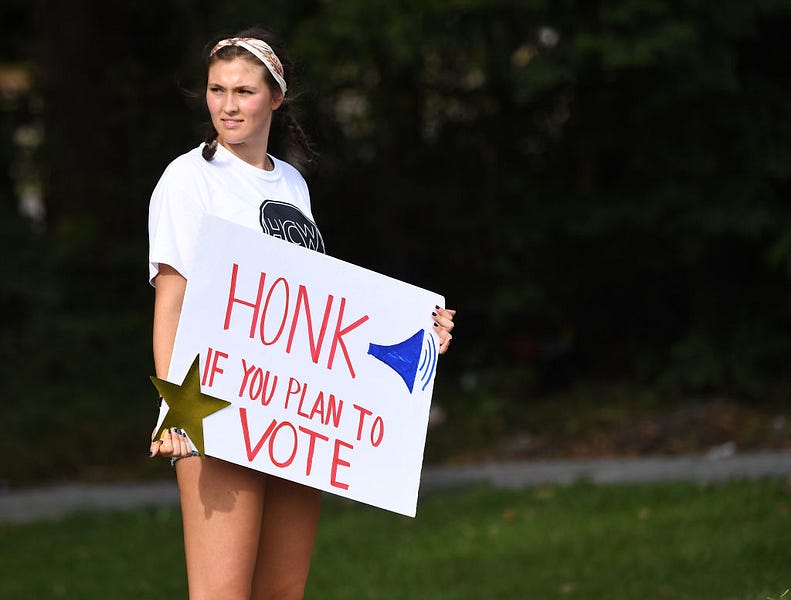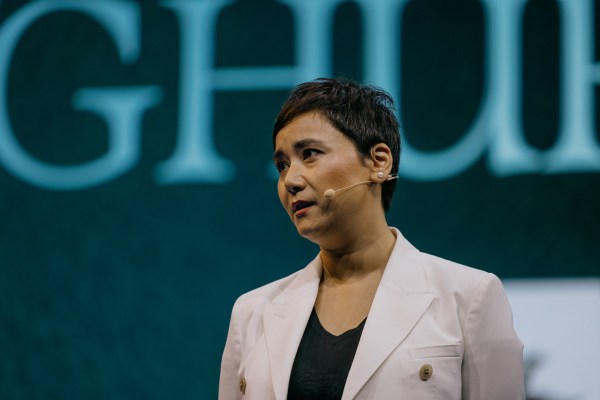Campaign Quick Hits
Ohio Rumbles: Rumors swirled late last week that Donald Trump would endorse J.D. Vance despite the millions in ads run by outside groups like Club for Growth highlighting Vance’s past statements about the former president. Perhaps it was a trial balloon floated by the Trump team to see how Republicans in the state would react? If so, 42 local GOP leaders signed a letter urging Trump not to endorse Vance, hoping that would kill it. Or, more likely, it was a last ditch effort by Josh Mandel’s team to kill the endorsement of his main rival? Nobody was quite sure how serious the rumors were as we sat down to our Passover dinners on Friday night. Lucky for us, Harvest was reporting from Ohio last week and has some important details:
On Friday, Trump’s team issued a statement sealing the deal: “In the Great State of Ohio, the candidate most qualified and ready to win in November is J.D. Vance. We cannot play games. It is all about winning!”
He added that it had been a tough choice: “This is not an easy endorsement for me to make because I like and respect some of the other candidates in the race—they’ve said great things about ‘Trump’ and, like me, they love Ohio and love our country.” “Like some others,” Trump said in his endorsement, “J.D. Vance may have said some not so great things about me in the past, but he gets it now, and I have seen that in spades.”
The question is whether Trump’s endorsement will move numbers.
An early March Fox News survey found Gibbons and Mandel within 2 points of each other at 22 and 20 percent, respectively. Vance trailed in at 11 percent, and Timken had 9 percent. But that poll also found that almost a quarter of likely GOP primary voters were undecided. A new Trafalgar primary poll released Friday showed Vance in second place, just 6 percentage points shy of Mandel. He had improved nearly 9 points from his standing in Trafalgar’s poll in February.
Now we wait.
You can read Harvest’s full piece here.
Incumbent vs. Incumbent: West Virginia lost a congressional seat after the last census. And the resulting redistricting means that two Republican incumbents are running against each other. Rep. David McKinley voted for President Joe Biden’s infrastructure bill last year, bringing home roughly $6 billion to West Virginia; Rep. Alex Mooney didn’t, winning him Trump’s endorsement. It’s shaping up to be a fascinating race focused on that infrastructure vote and—with the usual incumbency advantage canceled out—squarely pitting the old Republican Party against the new. The primary is May 10 and here’s Politico’s profile of the race.
Notes From 2020: People like me made a lot of the “pivot” counties—the 206 counties that supported Barack Obama in 2008 and 2012 but voted for Trump in 2016—in the run-up to the 2020 election. The idea was that those counties would largely determine who would win. But Biden won only 25 of the 206 pivot counties and yet had a decisive victory in both the popular vote and the electoral count. Instead, as former Clinton adviser Doug Sosnik noted, Biden won because he had a double-digit increase over Hillary Clinton with independents and suburban voters.
There’s some good and bad news here for Democrats. On the one hand, it means that most of those pivot counties aren’t swing counties. A lot of them comprised predominantly white, working class voters, largely in the Midwest, who had voted for the Democratic Party their whole lives but who were feeling increasingly alienated by a new Democratic coalition that no longer spoke to or with them—a little like the lifelong Democratic voters in the South 50 years ago. There was a moment in the 1960s and 1970s when it may have looked like Texas was a swing state. In fact it was just moving from being permanently blue to permanently red. Along the same vein, there’s no evidence that these voters are ever coming back to the Democratic Party. And in fact, it’s more likely that Democrats haven’t even bottomed out with this demographic shift yet.
On the other hand, Biden still won, which means that there is a more-than-viable avenue for Democrats to win national elections without a large chunk of the non-college educated white vote—still the largest single voting bloc in the U.S. But they need independents and suburban voters, who are a notoriously fickle bunch, to do it. Only 27 percent of independents in the latest Reuters/Ipsos poll said they approved of the job Biden is doing. They also need a large share of Hispanic voters, young people, and college-educated women. And while this coalition may be just fine for winning presidential elections, it’s an odd electoral strategy overall because our legislative elections are based on states. And because that new coalition of voters isn’t spread out evenly across the country, this may be the last time Democrats control the Senate for a while.
Fun (Dark) Facts: When a senator dies, in most cases their home state governor appoints a replacement until a special election can be called or the next regular election cycle, creating a quasi-incumbent. But not so in the House. The seat stays vacant until an election. Now the Continuity of Government Commission has recommended a constitutional amendment that would “require House members to designate, confidentially, a list of replacements to serve in their stead if they’re killed or incapacitated.” Note that the seat would still remain vacant in the case of resignation or removal—for the obvious reason that we don’t want to incentivize Cyrano de Bergerac-esque election shenanigans.
But why not have the governor appoint someone, as is most often the case in the Senate? “Our recommendation now is that successors shall be drawn from a list appointed by each House member, to ensure that the temporary successor is as similar as possible to the deceased member,” the authors argue, “a replacement member selected by a sitting member would likely represent the party, geography, ideology, or other characteristics important to the sitting member and thus would be more likely to reflect the desires of those who voted for that member.
These decisions certainly affect campaigns. There are plenty of examples of strategic gubernatorial appointments in the Senate—governors who intentionally picked someone whom they knew wouldn’t run for election in order to leave the field open and keep diverse allies in the state happy, governors who tried to give a leg up to their chosen candidate in the future primary field, and governors who went to jail for trying to profit off the appointment.
The Must Read Article of the Year: There’s a lot of meat in the latest Jonathan Haidt piece in The Atlantic, “Why The Past 10 Years of American Life Have Been Uniquely Stupid.” I beg you to read the whole thing, but here’s a nice taste:
By giving everyone a dart gun, social media deputizes everyone to administer justice with no due process. Platforms like Twitter devolve into the Wild West, with no accountability for vigilantes. A successful attack attracts a barrage of likes and follow-on strikes. Enhanced-virality platforms thereby facilitate massive collective punishment for small or imagined offenses, with real-world consequences, including innocent people losing their jobs and being shamed into suicide. When our public square is governed by mob dynamics unrestrained by due process, we don’t get justice and inclusion; we get a society that ignores context, proportionality, mercy, and truth.
But after explaining just why social media has been so corrosive to our institutions and politics, Haidt does something unique: He proposes solutions. “Reforms,” he says, “should reduce the outsize influence of angry extremists and make legislators more responsive to the average voter in their district.” And his two examples are to “end closed party primaries, replacing them with a single, nonpartisan, open primary from which the top several candidates advance to a general election that also uses ranked-choice voting” and some version of nonpartisan redistricting commissions.
We’ve discussed both in this newsletter. I don’t think either would do any harm. But I’m not sure they’ll do that much good, either. Haidt argues that Alaska’s open primary “seems to have given Senator Lisa Murkowski more latitude to oppose former President Trump, whose favored candidate would be a threat to Murkowski in a closed Republican primary but is not in an open one.” That’s true. But Joe Manchin has bucked his party’s president, as has Kyrsten Sinema. The reality of Murkowski is also just a little more complicated. She did lose her Republican primary in 2010 and won as a write-in candidate, meaning she was already a moderate maverick before Alaska adopted the open primary. Perhaps her confidence comes more from her famous last name as the daughter of a former U.S. senator and governor of the state than the primary system.
A Change Is A Comin’: Looks like neither party was particularly pleased with how 2020 turned out. Democrats are looking to change up the order of their primary states. The DNC passed a resolution last week providing the “three characteristics that the DNC is seeking in an early state: electoral diversity, competitiveness in a general election, and an inclusive nominating process.” Minnesota, Michigan, and Nebraska are already putting their names in the hat to challenge Iowa for the Midwestern slot. New Jersey is challenging New Hampshire. And I suspect there will be plenty more to come.
On the Republican side, the RNC just voted “to require GOP presidential candidates to attest in writing that they will only appear at party-sanctioned primary and general election debates.” This may be the official death knell of the bipartisan Commission on Presidential Debates. Then again, maybe not. The rules can be revisited anytime—and most importantly at the nominating convention at which the nominee will get to decide whether he (or she, but that feels like an unnecessary hedge at this point) wants to debate the Democratic nominee and in what forum.
The Yutes
The youths talk a big game, but they don’t vote. That’s what any campaign consultant would have told you 10 years ago. But thanks in large part to Trump, turnout among young voters spiked in 2018 and 2020—“36 percent of 18- to 29-year-olds voted that cycle, almost doubling 2014’s rates and beating any previous midterm participation since the 1980s.” And to no one’s surprise, Biden had a 25-point margin with these youngins.
But that was then and this is now.
Approval for President Joe Biden among people aged 18-30 [has] hit depths no Democratic president had plumbed in decades: the mid- to low-30s in Gallup and other polls. (Barack Obama never dropped below 42 percent among that group in Gallup’s surveys.) In some cases, the swing against Biden in 2021 totaled anywhere from 20 to 30 percentage points.
As pollster John Della Volpe, who has specialized in surveying young people for over 20 years, said to Politico, “There are more younger people in play than there were in the last two cycles.”
Our own Kristen Soltis Anderson (“our own” not because she works for The Dispatch but because of my abiding affection for her both in and out of this newsletter) wrote on this trend as well:
Biden’s overall job approval is 37 percent. But among voters under age 35? It’s only 34 percent. Even among young voters who do approve of how Biden is doing, in that poll, the “strongly approve” figure is only seven percent. Seven! Among seniors age 65+, “strongly approve” is 32 percent. This suggests two things: one is that Biden is actually somehow keeping things somewhat more competitive with an older cohort that otherwise leans a teensy bit to the right (in our AARP poll, they break down 47% Republican, 42% Democrat). But the other is that young voters are fairly checked out of politics at the moment, and are completely lukewarm on the current Democratic Party.
What does it all mean? I’m expecting youth turnout to take a big hit in 2022. And I’m expecting some surprisingly low margins for Democrats with this group in specific races where the Republican candidate is the least Trump-esque.







Please note that we at The Dispatch hold ourselves, our work, and our commenters to a higher standard than other places on the internet. We welcome comments that foster genuine debate or discussion—including comments critical of us or our work—but responses that include ad hominem attacks on fellow Dispatch members or are intended to stoke fear and anger may be moderated.
With your membership, you only have the ability to comment on The Morning Dispatch articles. Consider upgrading to join the conversation everywhere.